We already know Travel Search Trends 2020. Part 8 – flexibility in holiday travel planning the flexibility with which different income groups treat selected elements of a travel package (transportation, hotel, travel distance, etc.). This time we will look at whether there is a correlation between the frequency of trips and the flexibility with which individual criteria that characterize a planned leisure trip are treated.
For those who travel only once a year (see Figure 1), the questions of choosing travel companions and mode of transportation are the least flexible (in each of these cases, 30% of respondents chose the ‘lowest flexibility’ option). Travellers in this group are most flexible when it comes to budget (53% of indications), which is probably not surprising: travelling only once a year, they probably do not want to treat financial constraints as the main determinant in choosing a tourist offer. In contrast, moderate (medium) flexibility is maintained in all other criteria (between 30% and 40% of indications).
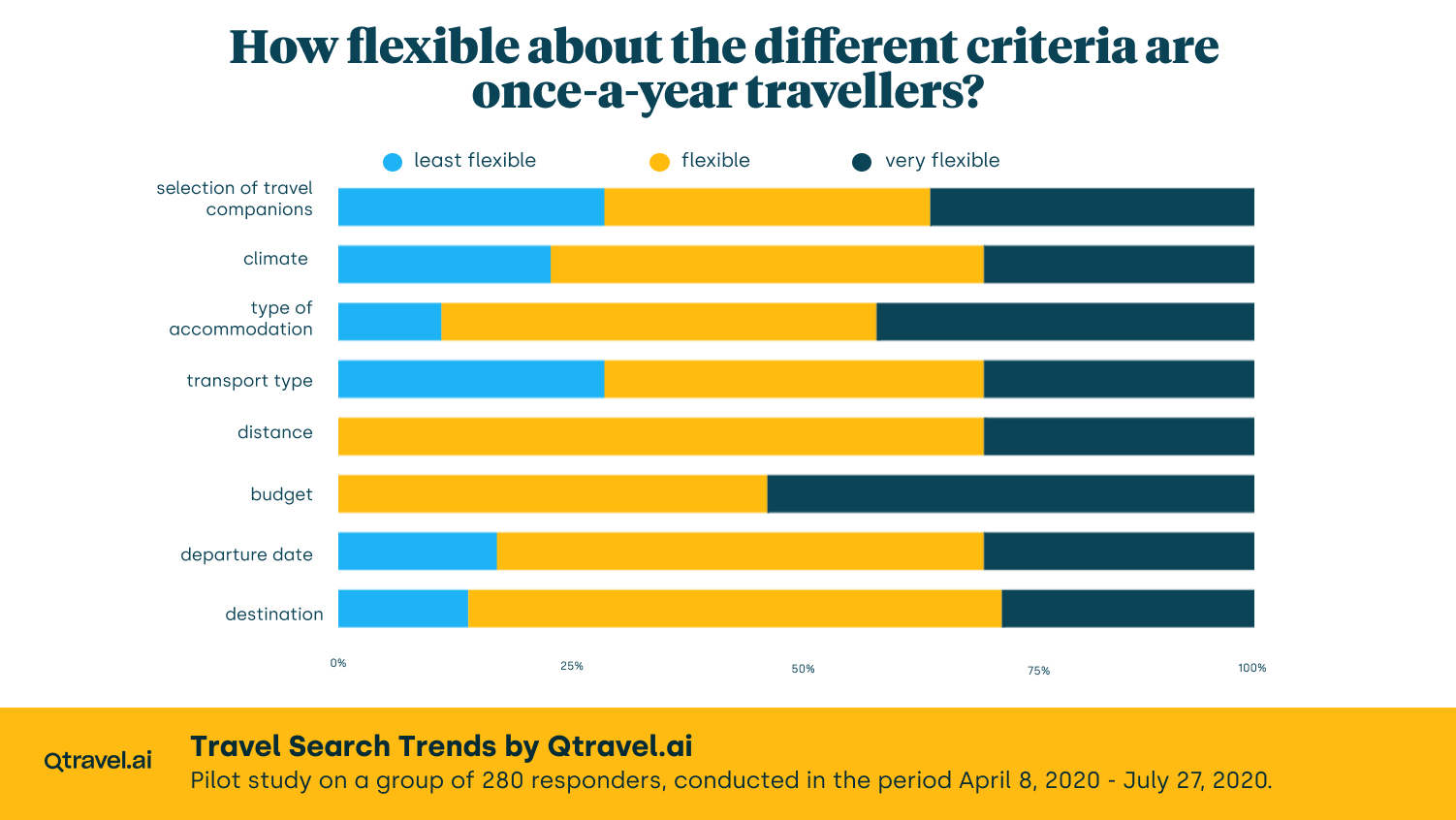
Biannual travellers (see Figure 2) were even more likely than the first group to indicate extremely low flexibility in choosing companions (almost half of the indications). They did not attach much importance to the issue of choosing a means of transport, and showed low flexibility in the area of departure dates – travelling twice in a year is not much, so this group is probably dominated by people who need to schedule their holidays in advance. The highest flexibility was declared in this group in relation to the type of accommodation (almost 50% of respondents indicated that they treat accommodation with the highest flexibility), as well as in relation to the weather conditions at the destination (47% of respondents treat this factor freely) and in relation to the type of transport and the destination (in both cases 42% indications). Thus, it is important to note that, in general, other than the choice of companions, those who undertake biannual trips remain extremely flexible in almost all aspects of travel.
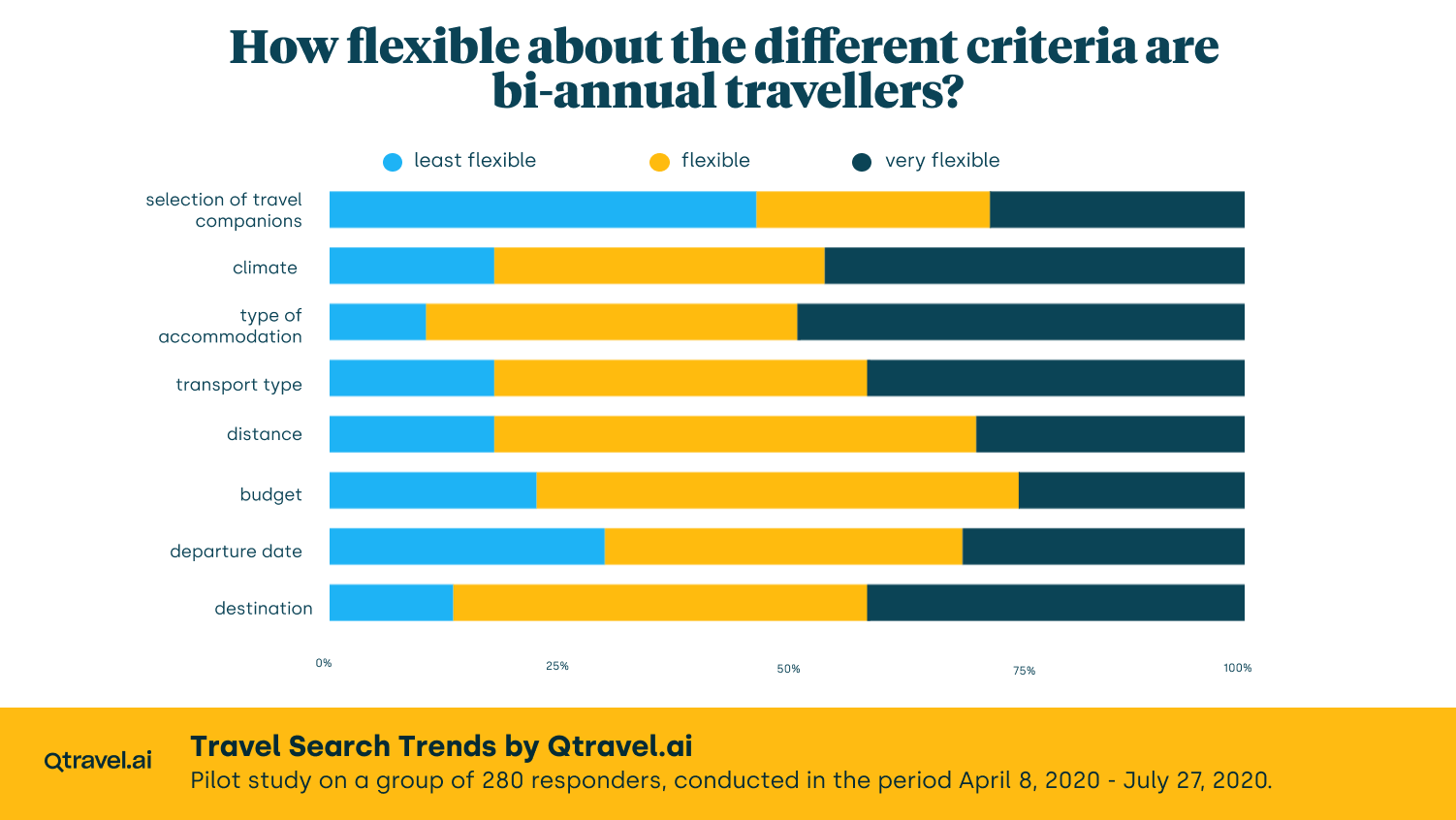
In the case of tourists who travel three times a year (see Figure 3), inflexibility concerned, as in other groups, the choice of companionship (46% indications), but also budget (45%) and departure dates (39%). However, the highest flexibility was declared with respect to distance (almost half of the indications). In other cases, ‘high’, ‘medium’, and ‘low’ flexibility responses appeared with practically equal frequency.
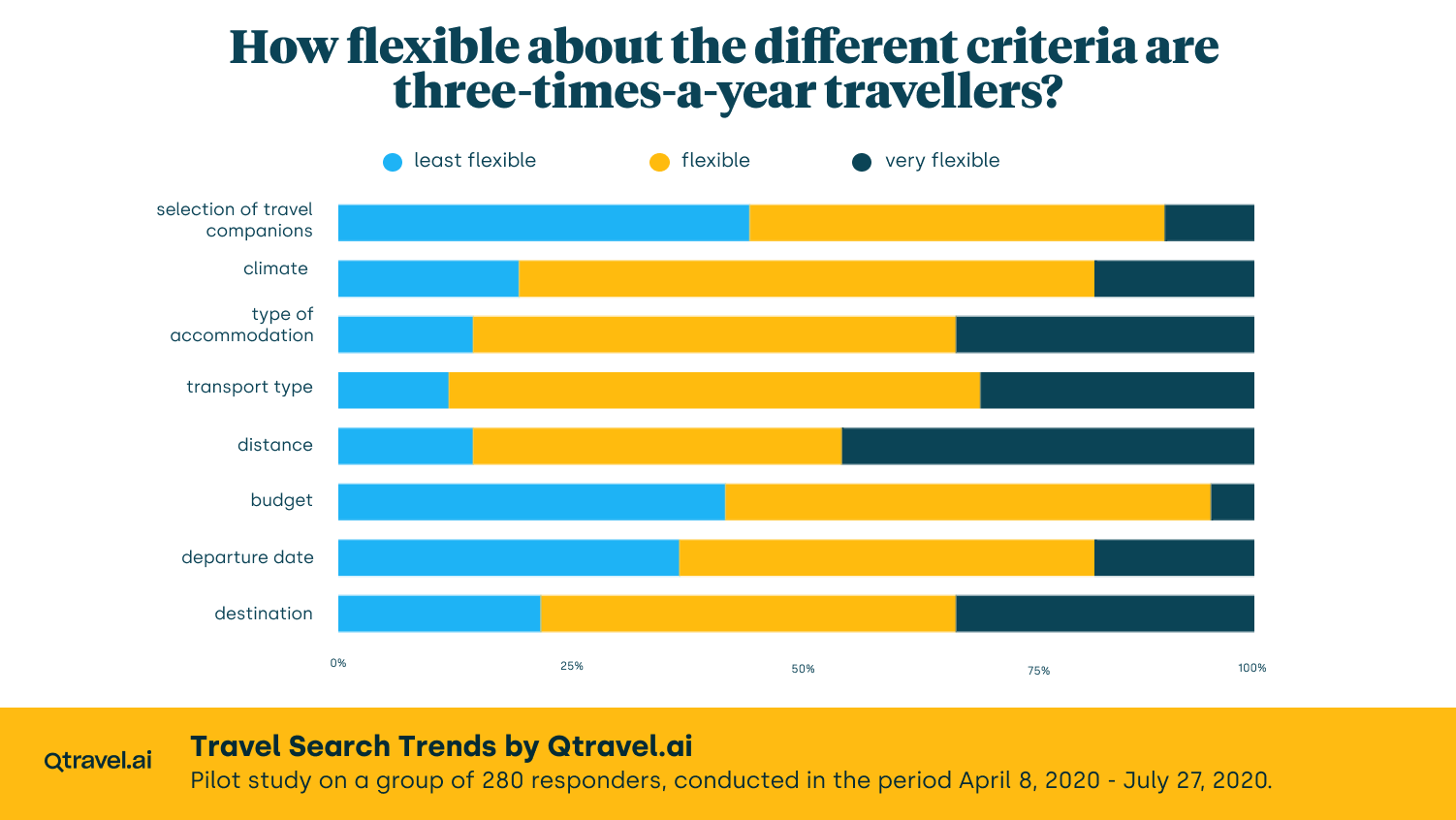
Travellers who go on four trips a year (see Figure 4) generally did not indicate criteria that could be considered particularly limiting. Even the selection of companions (indicated most often as scarcely flexible) was chosen by only 32% of respondents. On the other hand, high flexibility was declared in practically all questions and in all criteria (except for the selection of companions), and there were high numbers of indications (between 40% and 52%).
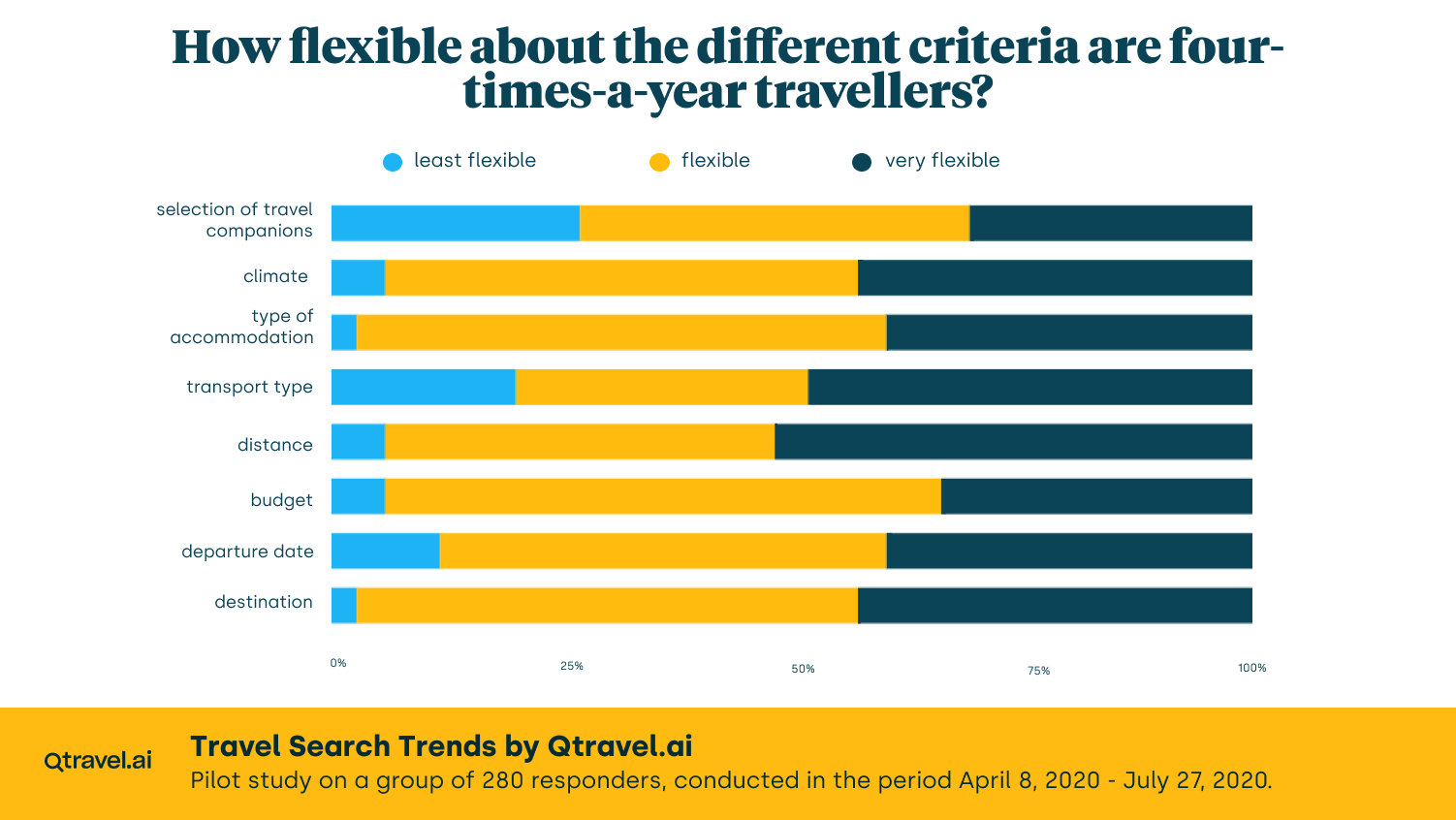
On the other hand, the group of people who take 5 tourist trips per year is characterised by strongly differentiated results (see Figure 5). As many as 54% of the respondents reported a lack of flexibility in choosing companionship. 43% of them saw departure dates and choice of transportation (42% indications in both cases), and slightly fewer (38%) – destination, as strong limiting factors. High flexibility was declared with regard to climate, choice of companions, and type of accommodation, but in all cases this choice was made by only 34% of respondents, which in the case of accommodation and choice of companions proved to be less frequent than declarations of very low flexibility.
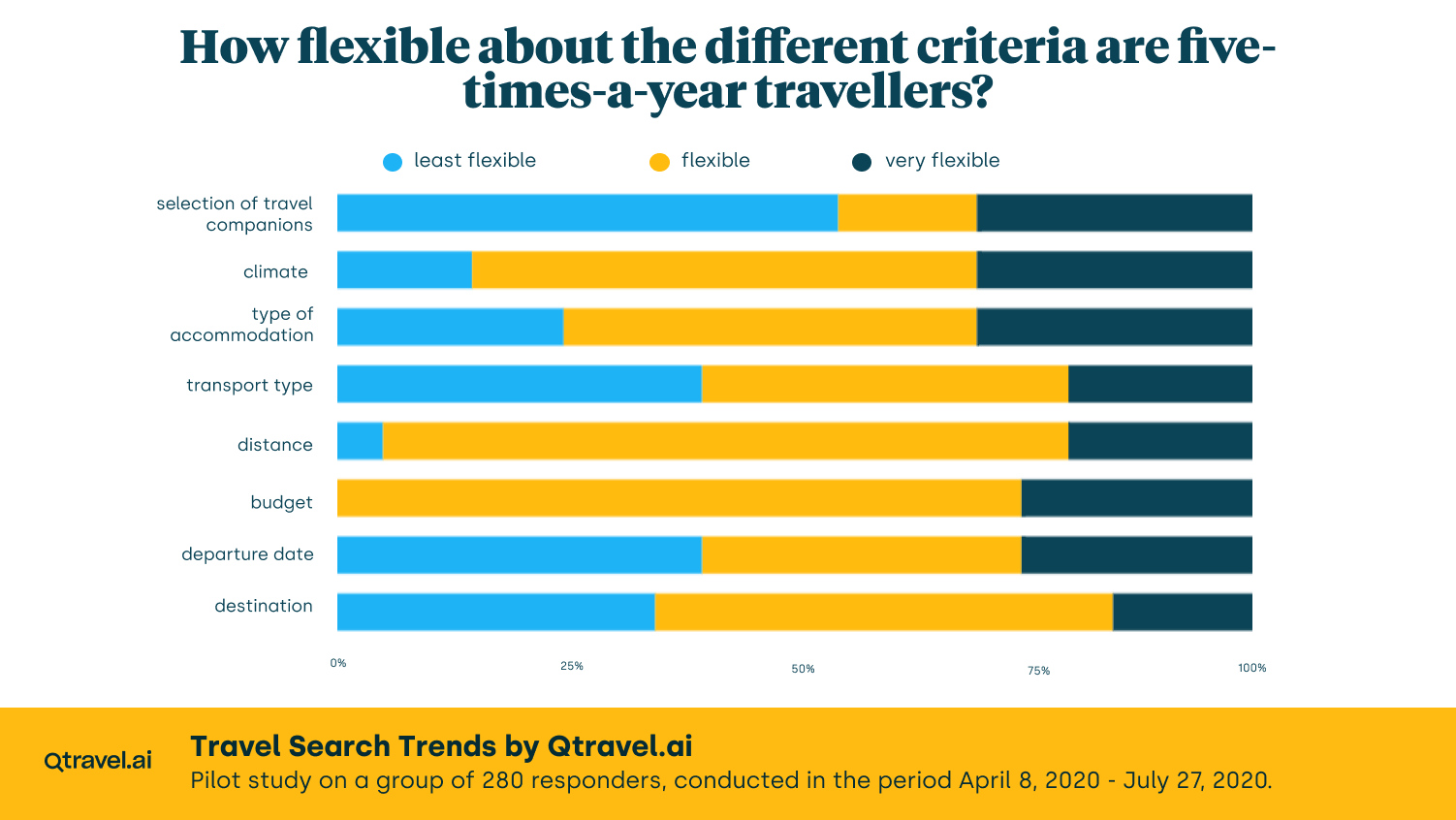
In the group of people travelling 6 times a year (see Figure 6), there is a high degree of inflexibility when it comes to choosing a holiday companion (47% of indications) and a relatively high percentage of people (almost 40%) characterised by low flexibility towards the choice of transport. The greatest flexibility was declared with regard to the distance and destination (both 47% of indications). For the other criteria, the proportions of people choosing one of the three responses were essentially even.
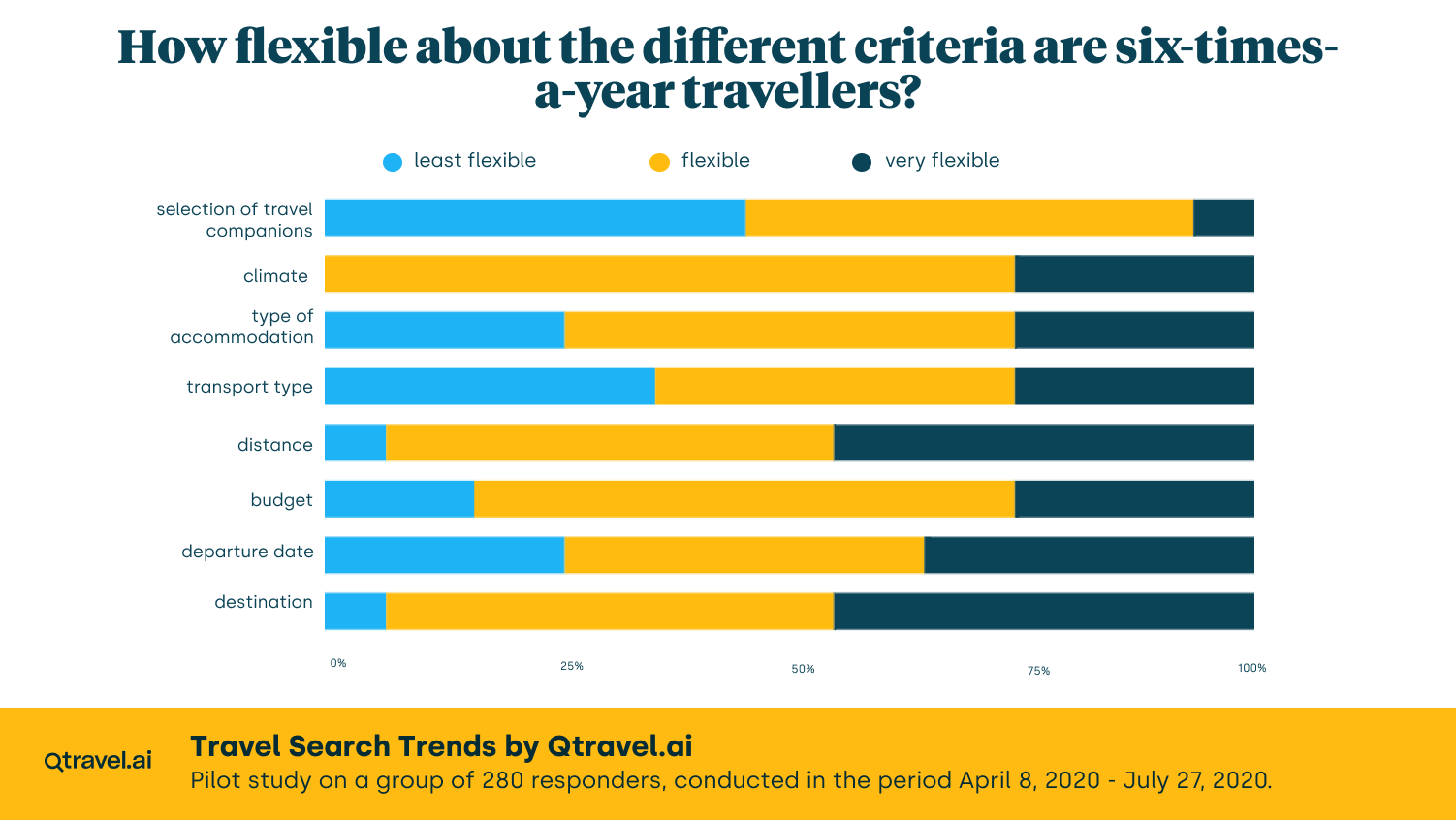
The most frequent travellers (7 or more times per year) indicated medium flexibility in virtually all criteria, with between 40% and 53% of respondents selecting this response for virtually every question. The exceptions were, as usual, the choice of companions (very equal proportions of those indicating each of the three answers) and the destination, where a very high level of flexibility was indicated (45% of indications).
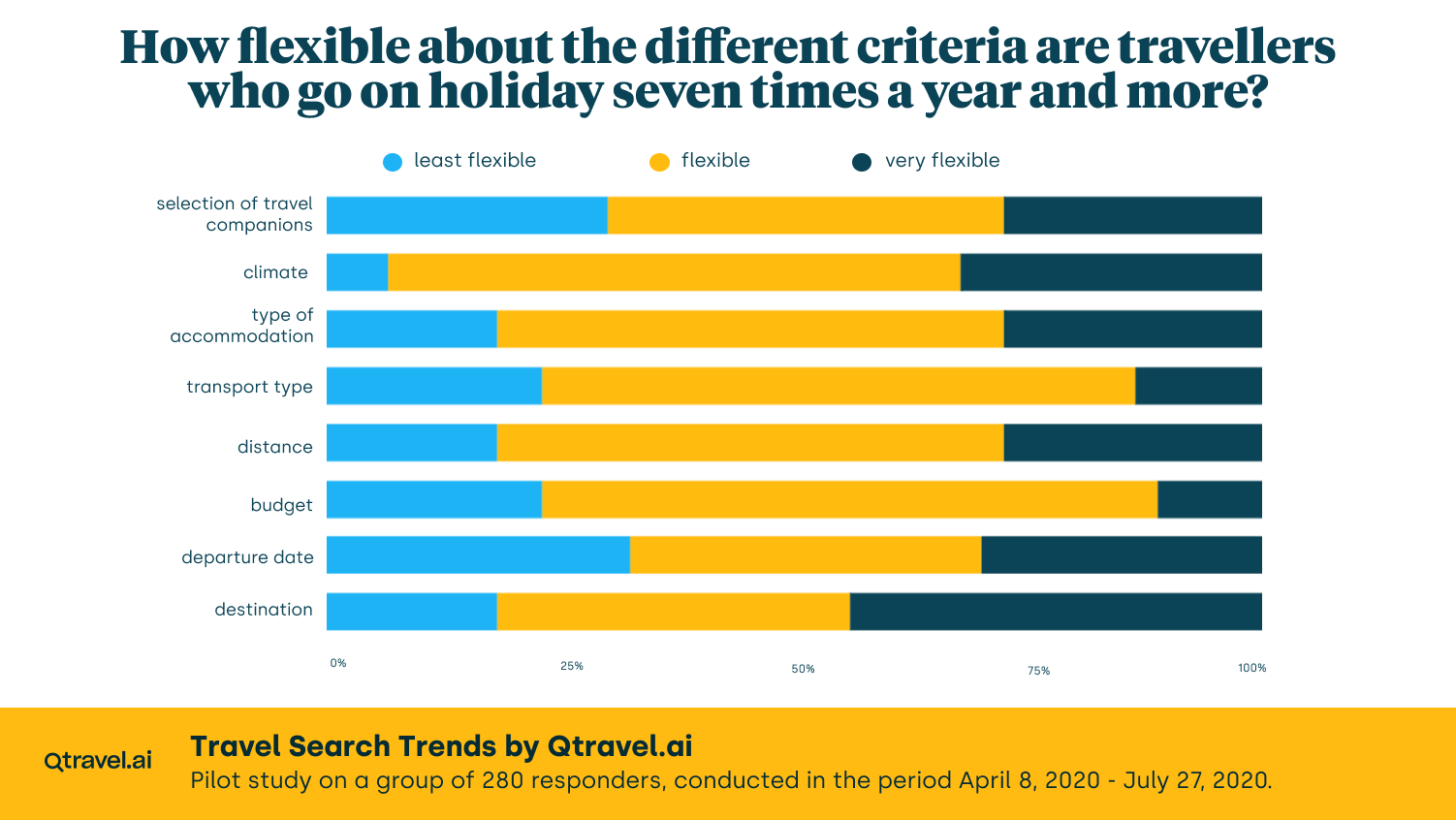
In conclusion, it is worth noting that, as with the correlation with income, the frequency of trips taken per year does not change the fact that the choice of companions is an important factor in planning leisure trips, and also a significant constraint (lack of flexibility). We treat all other criteria, especially compared to companionship, with medium to high flexibility. Some fluctuations in some groups referred to the dates of departure (the need to plan a holiday affects lower flexibility) or budget (especially in groups declaring a low number of trips per year), but as a rule it should be concluded that the frequency of travel does not explicitly affect higher or lower flexibility with which we treat the criteria for planning tourist trips listed in the survey.
We encourage you to read the rest of the articles in this series:
- Part 1: Profile of the respondents.
- Part 2: How often do tourists travel during the year?
- Part 3: Do we like long holiday stays in Poland?
- Part 4: Poles travelling abroad part 1.
- Part 5: Poles travelling abroad part 2.
- Part 6: How far in advance do we plan tourist trips?
- Part 7: How far in advance do we plan tourist trips? – the income factor.
- Part 8: Flexibility in holiday travel planning.
- Part 9: Frequency of travel versus flexibility in travel planning.
- Part 10: Gender versus flexibility in travel planning.
